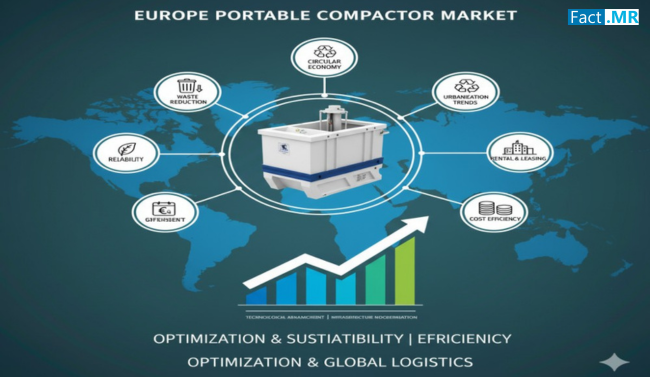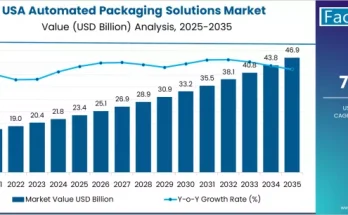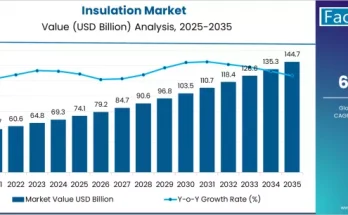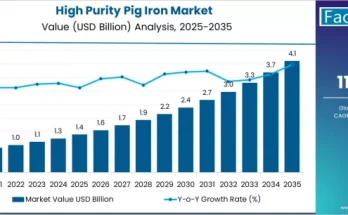As Europe continues to prioritize sustainability and efficient waste management, the portable compactor market is gaining significant traction. Portable compactors, designed to compress large volumes of waste, are transforming waste collection processes by reducing transportation costs, carbon emissions, and landfill volumes. Growing emphasis on circular economy models, recycling initiatives, and stringent environmental regulations are propelling market expansion across Europe. The adoption of portable compactors is not just about waste reduction—it’s about building an ecosystem of responsible waste handling and operational efficiency.
Market Overview:
The portable compactor market in Europe is evolving as municipalities, manufacturing plants, and commercial establishments embrace modern waste management technologies. These compactors are being integrated into waste handling infrastructure to manage diverse waste streams, including food, packaging, paper, and industrial waste. Designed for mobility and versatility, portable compactors are increasingly preferred over static models due to their ease of transport and reduced installation requirements.
Governments across Europe are investing in advanced waste management systems to meet ambitious recycling and landfill diversion targets. The growing preference for on-site waste compression and the need for cost-efficient logistics are encouraging adoption in industries like retail, hospitality, construction, and food processing.
Regional Insights:
Western Europe dominates the regional market, led by countries such as Germany, the United Kingdom, France, and the Netherlands, where waste reduction policies are deeply ingrained in business practices. Germany’s focus on waste segregation and recycling efficiency drives demand for high-performance compactors integrated with smart monitoring technologies.
Meanwhile, Northern and Southern European regions are witnessing gradual adoption, supported by the expansion of municipal waste management projects and the modernization of public infrastructure. In Eastern Europe, the market is emerging rapidly as governments align with EU waste directives and promote sustainable practices across urban and industrial sectors. The availability of portable compactors with remote monitoring and IoT-based tracking further enhances operational transparency and compliance.
Key Trends and Forecast:
- Rise of Smart Waste Management Solutions:
The integration of IoT sensors and telematics into portable compactors allows remote monitoring of waste levels, compaction efficiency, and maintenance schedules. These smart solutions optimize waste collection routes and enable predictive servicing, reducing downtime and operational costs. - Focus on Energy Efficiency:
Manufacturers are increasingly developing compactors with low-power consumption motors and energy recovery systems. This shift aligns with Europe’s green energy initiatives and helps end-users achieve carbon reduction goals. - Growth in On-Site Waste Management:
Commercial establishments, particularly in hospitality, retail, and healthcare, are implementing on-site compacting solutions to minimize waste transportation needs. Portable compactors enable efficient handling of high-volume waste while maintaining hygiene standards. - Recycling and Circular Economy Integration:
Portable compactors play a crucial role in sorting and compressing recyclable waste, aiding businesses in achieving sustainability certifications. Their compatibility with recycling infrastructure makes them essential for the transition toward circular economy practices. - Technological Advancements in Design:
The market is seeing innovation in compactor design, with hydraulic systems becoming more compact, durable, and user-friendly. Models offering customizable capacity, automated loading, and noise reduction features are gaining popularity among both commercial and municipal users. - Increasing Rental and Leasing Services:
With growing demand from short-term projects and construction sites, several waste management service providers now offer rental options for portable compactors. This trend is particularly strong in construction, where mobility and flexibility are key operational priorities.
Applications and End-Use Outlook:
Portable compactors are finding broad applications across industries.
- Municipal Waste Management:Local governments utilize compactors for urban waste collection, particularly in high-density areas where frequent transportation is impractical.
- Retail and Hospitality:Shopping malls, restaurants, and hotels use compactors to manage packaging waste and maintain clean environments.
- Manufacturing and Industrial Plants:These sectors deploy compactors to handle production waste, packaging materials, and scrap efficiently.
- Construction and Demolition:Construction firms rely on portable compactors to reduce site waste and improve logistics.
- Healthcare and Food Industry:Hospitals and food processors benefit from compactors that ensure hygienic waste handling while minimizing contamination risks.
The integration of automation and remote control systems is further simplifying waste handling processes in these industries, making portable compactors a key component of modern waste management frameworks.
Competitive Landscape:
The European portable compactor market features a mix of established waste management solution providers and emerging manufacturers focusing on sustainability-driven innovations. Companies are expanding their portfolios to include energy-efficient models, smart control panels, and improved safety mechanisms. Partnerships with recycling companies and municipal corporations are strengthening distribution networks and ensuring localized service support.
Manufacturers are also leveraging digital platforms to offer after-sales maintenance, data analytics for performance optimization, and customer-specific customization. Continuous R&D investments are leading to more durable and environmentally friendly compactor systems.
Challenges and Opportunities:
While the market outlook is promising, certain challenges persist. High initial investment costs, limited awareness in smaller municipalities, and space constraints in urban areas can hinder adoption. However, government incentives for eco-friendly equipment and funding for waste management modernization offer growth opportunities.
Additionally, the expansion of sustainable construction projects and corporate environmental responsibility programs is generating new demand for mobile waste solutions. With increased focus on achieving net-zero emissions, portable compactors are becoming indispensable for organizations aiming to minimize their carbon footprint.
Conclusion:
The Europe portable compactor market is at the forefront of sustainable waste management innovation. With a strong push toward efficiency, recycling, and environmental stewardship, portable compactors are revolutionizing how waste is handled across industries and municipalities. As smart technologies, energy-efficient systems, and circular economy principles continue to shape the market, the future promises even greater integration of portable compactors into Europe’s green infrastructure.
Organizations that invest in modern waste compaction solutions today not only reduce operational costs but also strengthen their commitment to sustainability—a key competitive advantage in Europe’s evolving industrial landscape.



